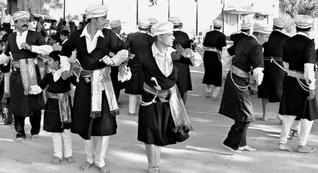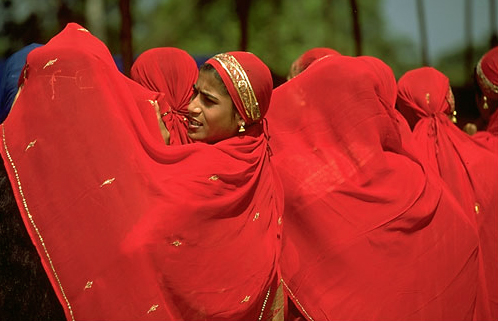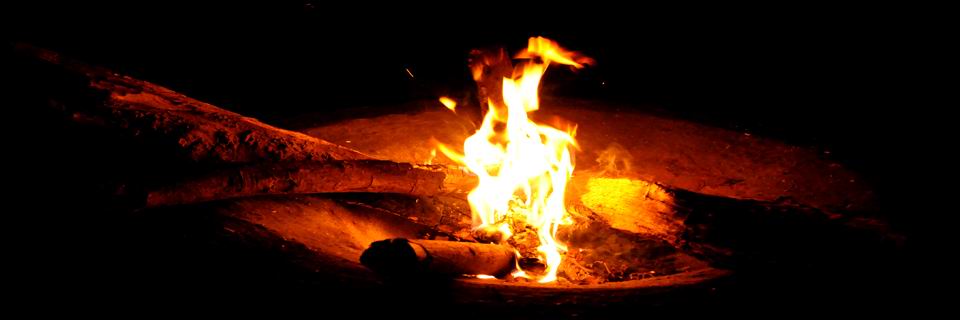|
 Coorg's inhabitants, the Kodavas, are also quite unique and their origins are not clear I noticed that women wear their saris in a very different way: draped across the chest and then pinned to the right shoulder (instead of across the left shoulder) with the pleats worn in the back (and not the front). Married women wear headscarves. Men traditionally wear turbans and black tunics with red sashes, and a dagger tucked in at the waist. Coorg's inhabitants, the Kodavas, are also quite unique and their origins are not clear I noticed that women wear their saris in a very different way: draped across the chest and then pinned to the right shoulder (instead of across the left shoulder) with the pleats worn in the back (and not the front). Married women wear headscarves. Men traditionally wear turbans and black tunics with red sashes, and a dagger tucked in at the waist.
The old traditions of Kodavas, before embracing Hinduism are unique and vastly different than Hinduism. None of the festivals, marriages, births or deaths is conducted by a Brahmin priest. Libations and meat are served in these occasions. Some of the customs are reminiscent of old Eurasian and pre-Christian Greek traditions.
Ethnic Dress Code:
|
The traditional costumes of Kodavas resemble that of the people of Middle East, with a long coat (Kuppya) down to mid-calf with a band of gold trimmed sash (chele) with tassels, across the waist tied in a bow. The ends of this sash hang gracefully over the left thigh.
The coat has a V-neck showing undergarments at the neck and arms. The kuppya is a sort of double-breasted coat with the right wrapping over the left side and stitched on the left side of the chest and trunk. It comes in various colors. The headdress is a piece of cloth (vastra) tied around the head, a turban, with the loose end hanging in the back at the nape of the neck. A bridegroom wears white kuppya with a brocaded white turban and a red brocaded chele.
Sports and martial arts like sword wielding are extolled, and hence there are some traditional swords and machetes that are used during ceremonies as well as part of the ceremonial costume. The most important is the peeche kathi, which is an ornamented dagger that can be worn on the waist band.
During wedding ceremonies, peeche kathi is used to break coconut and scoop out the inside shavings and offered to others. An odikathi which is a sword with a broad head is used to cut trunks of banana trees in a ceremonious fashion during weddings. These rituals are performed by a member of the grooms party during the initial offerings by the brides party.
|
 |
| Kodava women dress in a manner that is unique to their community. The pleats of the sari are tucked into a band around the waist. The pallu is brought around the back and then on to the right shoulder and tied in the front with a knot (molakattu). Chemise and ankle length petticoats are worn under the sari. A long-sleeved jacket with or without a close collar is worn as a blouse. Married women cover their heads with a cloth, five feet on each side with edges over the ears and then tied in the back with ribbons. This head garment is called a chowka. A widow will wear only white. Marriages of widows are not only accepted but also encouraged. |
Traditional Dance:
 |
Kodavas are very fond of dancing. Folk songs are sung while dancing. Kombat is a dance when the dancers are holding horns of stags, Couriat, with dancers holding yak-tails, piliyat, with peacock feathers, bolakat, with dance done in the temples around a lamp, and kolat, with dancers holding sticks are all commonly performed dances. Ummalat is a dance by women holding cymbals. Even in most of the religious functions, liquor and meat are not taboo. This has given the Kodavas a reputation as fun loving people with little inhibitions, who extol physical strength and skills. |
|













 Dress and Dance
Dress and Dance Coorg's inhabitants, the Kodavas, are also quite unique and their origins are not clear I noticed that women wear their saris in a very different way: draped across the chest and then pinned to the right shoulder (instead of across the left shoulder) with the pleats worn in the back (and not the front). Married women wear headscarves. Men traditionally wear turbans and black tunics with red sashes, and a dagger tucked in at the waist.
Coorg's inhabitants, the Kodavas, are also quite unique and their origins are not clear I noticed that women wear their saris in a very different way: draped across the chest and then pinned to the right shoulder (instead of across the left shoulder) with the pleats worn in the back (and not the front). Married women wear headscarves. Men traditionally wear turbans and black tunics with red sashes, and a dagger tucked in at the waist.




